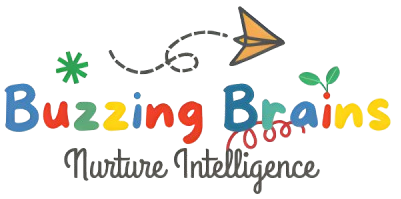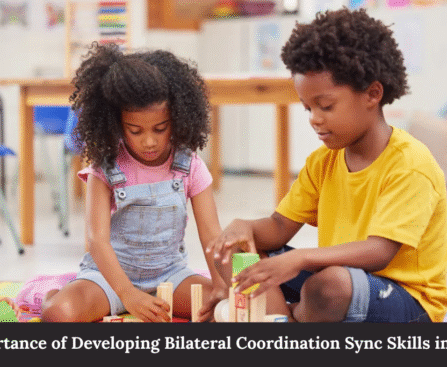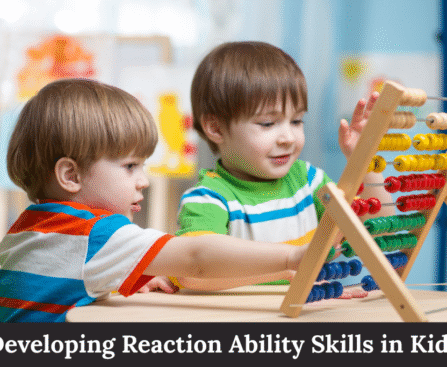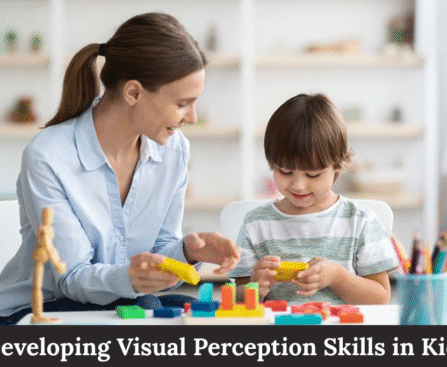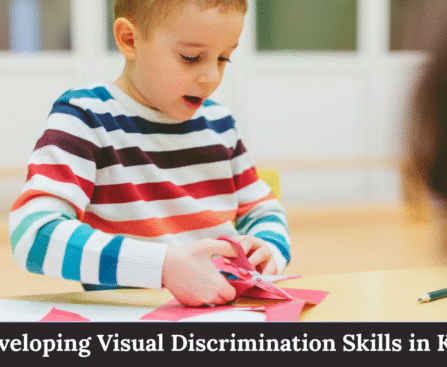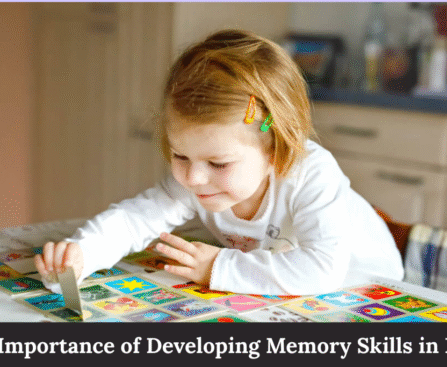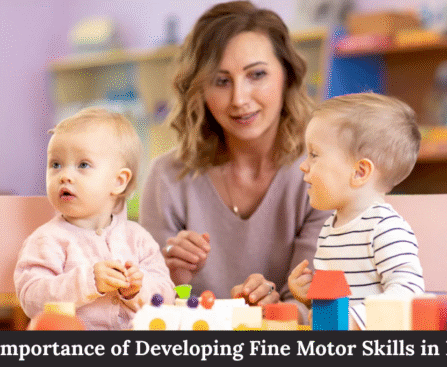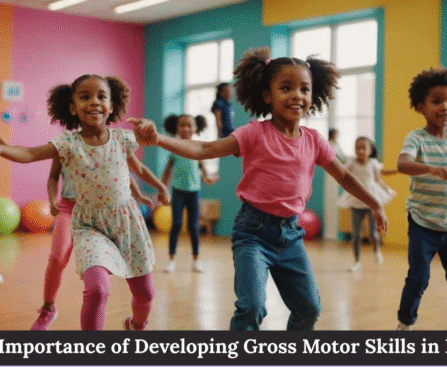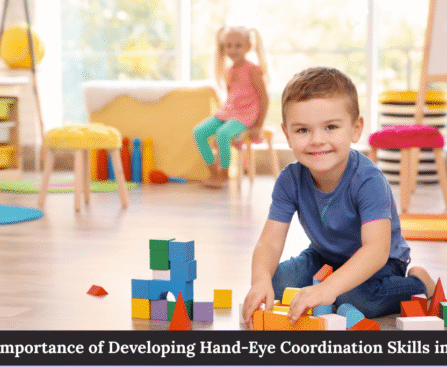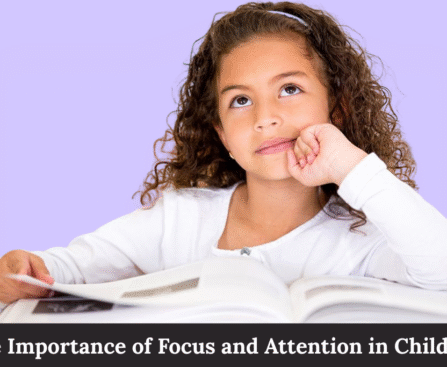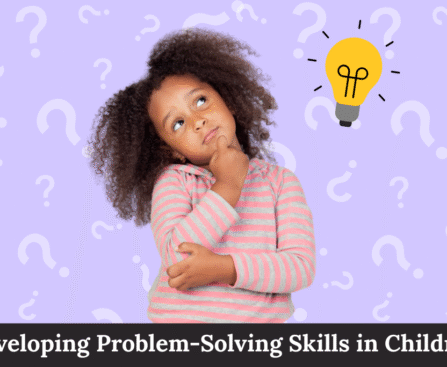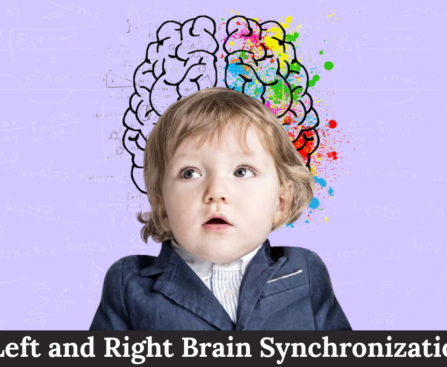As a parent, you want your child to grow into a healthy, confident, and capable individual. One crucial aspect of childhood development is Bilateral Coordination Sync skills, which enable kids to perform tasks that require the coordination of both sides of the body. In this article, we’ll explore the importance of developing Bilateral Coordination Sync skills in kids, the repercussions of not having developed these skills, and provide tips and strategies for parents to improve Bilateral Coordination Sync skills in their children. What are Bilateral Coordination Sync Skills? Bilateral Coordination Sync skills refer to the ability to coordinate both sides of the body to perform tasks, such as crawling, walking, running, and manipulating objects. These skills involve the integration of the brain and body, enabling kids to move efficiently, balance, and react to their environment. Why is it Important to Develop Bilateral Coordination Sync Skills? Developing Bilateral Coordination Sync skills is crucial for kids’ physical development, academic success, and everyday life. Here are some reasons why: Repercussions of Not Having Developed Bilateral Coordination Sync Skills If kids don’t develop Bilateral Coordination Sync skills, they may face several challenges, including: Difficulty with Physical Activities: Kids who struggle with Bilateral Coordination Sync skills may find it challenging to participate in physical activities, such as sports or dance. Poor Handwriting: Bilateral Coordination Sync skills are essential for handwriting, and kids who struggle with these skills may have poor handwriting. -Difficulty with Balance and Coordination: Kids who struggle with Bilateral Coordination Sync skills may have difficulty with balance and coordination, which can increase the risk of falls and injuries. Effects of a Lack of Bilateral Coordination Sync Skills in Different Age Groups The effects of a lack of Bilateral Coordination Sync skills can vary depending on the age group: 2-5 years: Kids in this age group may struggle with basic motor skills, such as crawling, walking, or running. 5-10 years: Kids in this age group may find it challenging to develop more complex motor skills, such as riding a bike or tying shoelaces. 10+ years: Kids in this age group may struggle with advanced motor skills, such as playing sports or musical instruments. Games, Puzzles, and Activities to Improve Bilateral Coordination Sync Skills Here are some games, puzzles, and activities that can help improve Bilateral Coordination Sync skills in kids: Obstacle Courses: Obstacle courses can help kids develop Bilateral Coordination Sync skills, such as crawling, climbing, and balancing. Ball Games: Ball games, such as catch or throw, can help kids develop hand-eye coordination and Bilateral Coordination Sync skills. Dance and Movement: Dance and movement activities can help kids develop Bilateral Coordination Sync skills, such as rhythm and timing. Puzzles and Games: Puzzles and games that require bilateral coordination, such as tying shoelaces or buttoning shirts, can help kids develop these skills. Strategies to Improve Bilateral Coordination Sync Skills in Children Here are some strategies to improve Bilateral Coordination Sync skills in kids: Practice Regularly: Encourage kids to practice Bilateral Coordination Sync skills regularly, using games and activities that promote skill-building. Make it Fun: Make Bilateral Coordination Sync skill development fun and engaging, using games and activities that kids enjoy. Provide Opportunities for Practice: Provide opportunities for kids to practice Bilateral Coordination Sync skills, such as playing sports or musical instruments. Be a Role Model: Be a role model for Bilateral Coordination Sync skill development, engaging in activities with your kid and promoting a healthy, active lifestyle. Tips for Parents Here are some tips for parents to help improve Bilateral Coordination Sync skills in their kids: Encourage Physical Activity: Encourage kids to engage in physical activities, such as sports or dance, which can help develop Bilateral Coordination Sync skills. Provide Feedback: Provide feedback to kids on their Bilateral Coordination Sync skills, helping them to identify areas for improvement and develop strategies for improvement. Make it a Family Affair: Make Bilateral Coordination Sync skill development a family affair, engaging in activities with your kid and promoting a healthy, active lifestyle. Be Patient: Be patient and supportive, recognizing that Bilateral Coordination Sync skill development can take time and practice. Additional Tips for Parents Here are some additional tips for parents to help improve Bilateral Coordination Sync skills in their kids: Use Real-Life Examples: Use real-life examples to help kids develop Bilateral Coordination Sync skills, such as tying shoelaces or buttoning shirts. Encourage Active Play: Encourage kids to engage in active play, such as running, jumping, and climbing, which can help develop Bilateral Coordination Sync skills. Provide Opportunities for Exploration: Provide opportunities for kids to explore and learn new things, which can help develop their Bilateral Coordination Sync skills. Celebrate Successes: Celebrate kids’ successes in developing Bilateral Coordination Sync skills, which can help build their confidence and motivation. Common Challenges and Sol9utions Here are some common challenges that parents may face when trying to improve Bilateral Coordination Sync skills in their kids, along with some potential solutions: Lack of Motivation: Encourage kids to find activities that interest them, and provide positive reinforcement and support. Limited Access to Resources: Look for free or low-cost resources in your community, such as parks or playgrounds, that can support Bilateral Coordination Sync skill development. Physical Disabilities: Consult with a healthcare professional or physical therapist to develop a plan that meets your kid’s needs and abilities. The Importance of Early Intervention Early intervention is critical for kids who are struggling with Bilateral Coordination Sync skills. Research shows that kids who receive early intervention and support are more likely to develop the skills they need to succeed in school and beyond. Conclusion Bilateral Coordination Sync skills are essential for kids’ physical development, academic success, and everyday life. By providing opportunities for practice, making it fun, and being a positive role model, parents can help their kids develop the Bilateral Coordination Sync skills they need to succeed.
As a parent, you want your child to grow into a healthy, confident, and capable individual. One crucial aspect of childhood development is reaction ability skills, which enable kids to respond quickly and effectively to various stimuli. In this article, we’ll explore the importance of developing reaction ability skills in kids, the repercussions of not having developed these skills, and provide tips and strategies for parents to improve reaction ability skills in their children. What are Reaction Ability Skills? Reaction ability skills refer to the ability to respond quickly and effectively to various stimuli, such as visual, auditory, or tactile cues. These skills involve the brain’s ability to process information and react accordingly, and are essential for physical activities, sports, and everyday life. Why is it Important to Develop Reaction Ability Skills? Developing reaction ability skills is crucial for kids’ physical development, academic success, and everyday life. Here are some reasons why: Improved Physical Performance: Reaction ability skills are essential for physical activities, sports, and games, enabling kids to respond quickly and effectively to various stimuli. Enhanced Cognitive Development: Reaction ability skills involve cognitive processing, which can help improve kids’ attention, focus, and decision-making abilities. Better Safety and Awareness: Reaction ability skills can help kids respond quickly and effectively to potential dangers, such as avoiding obstacles or reacting to emergencies. Increased Confidence: Mastering reaction ability skills can boost kids’ confidence and self-esteem, enabling them to tackle new challenges with greater ease. Repercussions of Not Having Developed Reaction Ability Skills If kids don’t develop reaction ability skills, they may face several challenges, including: Difficulty with Physical Activities: Kids who struggle with reaction ability skills may find it challenging to participate in physical activities, sports, and games. Poor Cognitive Development: Reaction ability skills involve cognitive processing, which can impact kids’ attention, focus, and decision-making abilities. Increased Risk of Accidents: Kids who struggle with reaction ability skills may be more likely to be involved in accidents or injuries. Effects of a Lack of Reaction Ability Skills in Different Age Groups The effects of a lack of reaction ability skills can vary depending on the age group: Games, Puzzles, and Activities to Improve Reaction Ability Skills Here are some games, puzzles, and activities that can help improve reaction ability skills in kids: Reaction Games: Games that require kids to react quickly to visual or auditory cues, such as “Simon Says” or “Red Light, Green Light”. Obstacle Courses: Obstacle courses that require kids to react quickly and navigate through challenges. Ball Games: Ball games that require kids to react quickly to catch or hit balls. – Sensory Play: Sensory play activities that challenge kids to react to different textures, sounds, or smells. Strategies to Improve Reaction Ability Skills in Children Here are some strategies to improve reaction ability skills in kids: Practice Regularly: Encourage kids to practice reaction ability skills regularly, using games and activities that promote skill-building. Make it Fun: Make reaction ability skill development fun and engaging, using games and activities that kids enjoy. Provide Opportunities for Practice: Provide opportunities for kids to practice reaction ability skills, such as playing reaction games or participating in sports. – Be a Role Model: Be a role model for reaction ability skill development, engaging in activities with your kid and promoting a healthy, active lifestyle. Tips for Parents Here are some tips for parents to help improve reaction ability skills in their kids: Encourage Physical Activity: Encourage kids to engage in physical activities, sports, and games that promote reaction ability skill development. Provide a Safe Environment: Provide a safe environment that allows kids to practice reaction ability skills without fear of injury or harm. Be Patient: Be patient and supportive, recognizing that reaction ability skill development can take time and practice. Make it a Family Affair: Make reaction ability skill development a family affair, engaging in activities with your kid and promoting a healthy, active lifestyle. Additional Tips for Parents Here are some additional tips for parents to help improve reaction ability skills in their kids: Use Real-Life Examples: Use real-life examples to help kids develop reaction ability skills, such as reacting to traffic signals or warning signs. Encourage Active Play: Encourage kids to engage in active play, such as running, jumping, and playing sports, which can help improve reaction ability skills. Provide Feedback: Provide feedback to kids on their performance, helping them to identify areas for improvement and develop strategies for improvement. Make it Challenging: Make activities challenging for kids, gradually increasing the difficulty level as they develop their reaction ability skills. Common Challenges and Solutions Here are some common challenges that parents may face when trying to improve reaction ability skills in their kids, along with some potential solutions: Lack of Motivation: Encourage kids to find activities that they enjoy, and provide positive reinforcement and support. Limited Access to Resources: Look for free or low-cost resources in your community, such as parks or playgrounds, that can support reaction ability skill development. Physical Limitations: Consult with a healthcare professional or physical therapist to develop a plan that meets your kid’s needs and abilities. The Importance of Early Intervention Early intervention is critical for kids who are struggling with reaction ability skills. Research shows that kids who receive early intervention and support are more likely to develop the skills they need to succeed in school and beyond. Conclusion Reaction ability skills are essential for kids’ physical development, academic success, and everyday life. By providing opportunities for practice, making it fun, and being a positive role model, parents can help their kids develop the reaction ability skills they need to succeed.
As a parent, you want your child to grow into a healthy, confident, and capable individual. One crucial aspect of childhood development is visual perception skills, which enable kids to interpret and understand visual information from their environment. In this article, we’ll explore the importance of developing visual perception skills in kids, the repercussions of not having developed these skills, and provide tips and strategies for parents to improve visual perception skill in their children. What are Visual Perception Skills? Visual perception skill refer to the ability to interpret and understand visual information from the environment, including shapes, colors, patterns, and movements. These skills involve the brain’s ability to process and analyze visual data, and are essential for learning, development, and everyday activities. Why is it Important to Develop Visual Perception Skills? Developing visual perception skill is crucial for kids’ cognitive development, academic success, and everyday life. Here are some reasons why: Improved Academic Performance: Visual perception skills are essential for learning and understanding various subjects, such as math, science, and reading. Better Problem-Solving Skills: Visual perception skills enable kids to analyze and interpret visual information, which is critical for problem-solving and critical thinking. Increased Confidence: Mastering visual perception skills can boost kids’ confidence and self-esteem, enabling them to tackle new challenges with greater ease. Enhanced Creativity: Visual perception skills enable kids to appreciate and create art, design, and other creative expressions. Repercussions of Not Having Developed Visual Perception Skills If kids don’t develop visual perception skills, they may face several challenges, including: Difficulty with Learning: Kids who struggle with visual perception skills may find it challenging to learn and understand new information. Poor Academic Performance: Visual perception skills are essential for academic success, and kids who struggle with these skills may perform poorly in school. Low Confidence: Poor visual perception skills can lead to low confidence and self-esteem, making kids more likely to avoid challenges and new experiences. Effects of a Lack of Visual Perception Skills in Different Age Groups The effects of a lack of visual perception skills can vary depending on the age group: 2-5 years: Kids in this age group may struggle with basic visual perception skill, such as recognizing shapes and colors. 5-10 years: Kids in this age group may find it challenging to learn and understand more complex visual information, such as patterns and sequences. 10+ years: Kids in this age group may struggle with more advanced visual perception tasks, such as interpreting graphs and charts. Games, Puzzles, and Activities to Improve Visual Perception Skills Here are some games, puzzles, and activities that can help improve visual perception skills in kids: Strategies to Improve Visual Perception Skills in Children Here are some strategies to improve visual perception skills in kids: Practice Regularly: Encourage kids to practice visual perception skills regularly, using games and activities that promote skill-building. Make it Fun: Make visual perception skill development fun and engaging, using games and activities that kids enjoy. Provide Opportunities for Practice: Provide opportunities for kids to practice visual perception skills, such as playing shape sorting games or completing puzzles. Be a Role Model: Be a role model for visual perception skill development, engaging in activities with your kid and promoting a healthy, active lifestyle. Tips for Parents Here are some tips for parents to help improve visual perception skills in their kids: Encourage Exploration: Encourage kids to explore and engage with their environment, which can help develop visual perception skills. Provide a Variety of Activities: Provide a variety of activities that promote visual perception skill development, such as puzzles, games, and art projects. Be Patient: Be patient and supportive, recognizing that visual perception skill development can take time and practice. Make it a Family Affair: Make visual perception skill development a family affair, engaging in activities with your kid and promoting a healthy, active lifestyle. Additional Tips for Parents Here are some additional tips for parents to help improve visual perception skills in their kids: Use Real-Life Examples: Use real-life examples to help kids develop visual perception skills, such as pointing out shapes and patterns in nature or architecture. Encourage Active Learning: Encourage kids to engage in active learning, such as hands-on activities and experiments, to help develop visual perception skills. Provide Feedback: Provide feedback to kids on their performance, helping them to identify areas for improvement and develop strategies for improvement. Make it Challenging: Make activities challenging for kids, gradually increasing the difficulty level as they develop their visual perception skills. Common Challenges and Solutions Here are some common challenges that parents may face when trying to improve visual perception skills in their kids, along with some potential solutions: Lack of Motivation: Encourage kids to find activities that they enjoy, and provide positive reinforcement and support. Limited Access to Resources: Look for free or low-cost resources in your community, such as libraries or online educational resources, that can support visual perception skill development. Learning Disabilities: Consult with a healthcare professional or educational specialist to develop a plan that meets your kid’s needs and abilities. The Importance of Early Intervention Early intervention is critical for kids who are struggling with visual perception skills. Research shows that kids who receive early intervention and support are more likely to develop the skills they need to succeed in school and beyond. Conclusion Visual perception skills are essential for kids’ cognitive development, academic success, and everyday life. By providing opportunities for practice, making it fun, and being a positive role model, parents can help their kids develop the visual perception skills they need to succeed.
As a parent, you want your child to grow into a healthy, confident, and capable individual. One crucial aspect of childhood development is visual discrimination skills, which enable kids to process and understand visual information. In this article, we’ll explore the importance of developing visual discrimination skill in kids, the repercussions of not having developed these skills, and provide tips and strategies for parents to improve visual discrimination skill in their children. What are Visual Discrimination Skills? Visual discrimination skill Refer to the ability to process and understand visual information, such as shapes, colors, and patterns. These skills involve the brain’s ability to analyze and interpret visual data, and are essential for learning and development. Why is it Important to Develop Visual Discrimination Skills? Developing visual discrimination skills is crucial for kids’ cognitive development and academic success. Here are some reasons why: Improved Academic Performance: Visual discrimination skills are essential for learning and understanding various subjects, such as math, science, and reading. Better Problem-Solving Skills: Visual discrimination skills enable kids to analyze and interpret visual information, which is critical for problem-solving and critical thinking. Increased Confidence: Mastering visual discrimination skills can boost kids’ confidence and self-esteem, enabling them to tackle new challenges with greater ease. Enhanced Creativity: Visual discrimination skills enable kids to appreciate and create art, design, and other creative expressions. Repercussions of Not Having Developed Visual Discrimination Skills If kids don’t develop visual discrimination skills, they may face several challenges, including: Effects of a Lack of Visual Discrimination Skills in Different Age Groups The effects of a lack of visual discrimination skills can vary depending on the age group: 2-5 years: Kids in this age group may struggle with basic visual discrimination skills, such as recognizing shapes and colors. 5-10 years: Kids in this age group may find it challenging to learn and understand more complex visual information, such as patterns and sequences. 10+ years: Kids in this age group may struggle with more advanced visual discrimination tasks, such as interpreting graphs and charts. Games, Puzzles, and Activities to Improve Visual Discrimination Skill Here are some games, puzzles, and activities that can help improve visual discrimination skill in kids: Shape Sorting: Shape sorting games can help kids develop visual discrimination skills, such as recognizing and categorizing shapes. Color Matching: Color matching games can help kids develop visual discrimination skills, such as recognizing and matching colors. Pattern Recognition: Pattern recognition games can help kids develop visual discrimination skills, such as recognizing and completing patterns. Art Projects: Art projects can help kids develop visual discrimination skills, such as creating and interpreting art. Strategies to Improve Visual Discrimination Skills in Children Here are some strategies to improve visual discrimination skills in kids: Practice Regularly: Encourage kids to practice visual discrimination skill regularly, using games and activities that promote skill-building. Make it Fun: Make visual discrimination skill development fun and engaging, using games and activities that kids enjoy. Provide Opportunities for Practice: Provide opportunities for kids to practice visual discrimination skills, such as playing shape sorting games or completing puzzles. Be a Role Model: Be a role model for visual discrimination skill development, engaging in activities with your kid and promoting a healthy, active lifestyle. Tips for Parents Here are some tips for parents to help improve visual discrimination skills in their kids: Encourage Exploration: Encourage kids to explore and engage with their environment, which can help develop visual discrimination skills. Provide a Variety of Activities: Provide a variety of activities that promote visual discrimination skill development, such as puzzles, games, and art projects. Be Patient: Be patient and supportive, recognizing that visual discrimination skill development can take time and practice. Make it a Family Affair: Make visual discrimination skill development a family affair, engaging in activities with your kid and promoting a healthy, active lifestyle. Additional Tips for Parents Here are some additional tips for parents to help improve visual discrimination skills in their kids: Use Real-Life Examples: Use real-life examples to help kids develop visual discrimination skill, such as pointing out shapes and patterns in nature or architecture. Encourage Active Learning: Encourage kids to engage in active learning, such as hands-on activities and experiments, to help develop visual discrimination skills. Provide Feedback: Provide feedback to kids on their performance, helping them to identify areas for improvement and develop strategies for improvement. Make it Challenging: Make activities challenging for kids, gradually increasing the difficulty level as they develop their visual discrimination skills. Common Challenges and Solutions Here are some common challenges that parents may face when trying to improve visual discrimination skill in their kids, along with some potential solutions: Lack of Motivation: Encourage kids to find activities that they enjoy, and provide positive reinforcement and support. Limited Access to Resources: Look for free or low-cost resources in your community, such as libraries or online educational resources, that can support visual discrimination skill development. Learning Disabilities: Consult with a healthcare professional or educational specialist to develop a plan that meets your kid’s needs and abilities. The Importance of Early Intervention Early intervention is critical for kids who are struggling with visual discrimination skills. Research shows that kids who receive early intervention and support are more likely to develop the skills they need to succeed in school and beyond. Conclusion Visual discrimination skills are essential for kids’ cognitive development and academic success. By providing opportunities for practice, making it fun, and being a positive role model, parents can help their kids develop the visual discrimination skills they need to succeed.
As a parent, you want your child to grow into a healthy, confident, and capable individual. One crucial aspect of childhood development is memory skills, which enable kids to learn, retain, and recall information. In this article, we’ll explore the importance of developing memory skills in kids, the repercussions of not having developed these skills, and provide tips and strategies for parents to improve memory skill in their children. What are Memory Skills? Memory skills refer to the ability to learn, retain, and recall information. These skills involve the brain’s ability to process, store, and retrieve information, and are essential for learning and development. Why is it Important to Develop Memory Skills? Developing memory skills is crucial for kids’ cognitive development and academic success. Here are some reasons why: Improved Academic Performance: Memory skills are essential for learning and retaining new information, which is critical for academic success. Better Problem-Solving Skills: Memory skills enable kids to recall and apply previously learned information to solve problems. Increased Confidence: Mastering memory skills can boost kids’ confidence and self-esteem, enabling them to tackle new challenges with greater ease. Enhanced Learning Capacity: Memory skill enable kids to learn and retain new information, which is essential for lifelong learning. Repercussions of Not Having Developed Memory Skills If kids don’t develop memory skills, they may face several challenges, including: Difficulty with Learning: Kids who struggle with memory skill may find it challenging to learn new information and retain it. Poor Academic Performance: Memory skills are essential for academic success, and kids who struggle with these skills may perform poorly in school. Low Confidence: Poor memory skills can lead to low confidence and self-esteem, making kids more likely to avoid challenges and new experiences. Effects of a Lack of Memory Skills in Different Age Groups The effects of a lack of memory skills can vary depending on the age group: 2-5 years: Kids in this age group may struggle with basic memory skills, such as remembering routines and sequences. 5-10 years: Kids in this age group may find it challenging to learn and retain new information, which can impact their academic performance. 10+ years: Kids in this age group may struggle with more complex memory tasks, such as remembering formulas and concepts. Games, Puzzles, and Activities to Improve Memory Skills Here are some games, puzzles, and activities that can help improve memory skills in kids: Strategies to Improve Memory Skills in Children Here are some strategies to improve memory skills in kids: Practice Regularly: Encourage kids to practice memory skills regularly, using games and activities that promote skill-building. Make it Fun: Make memory skill development fun and engaging, using games and activities that kids enjoy. Provide Opportunities for Practice: Provide opportunities for kids to practice memory skills, such as playing memory games or recalling sequences. Be a Role Model: Be a role model for memory skill development, engaging in activities with your kid and promoting a healthy, active lifestyle. Tips for Parents Here are some tips for parents to help improve memory skills in their kids: Encourage Learning: Encourage kids to learn new things, such as reading books or learning new skills. Provide a Supportive Environment: Provide a supportive environment that promotes learning and memory skill development. Be Patient: Be patient and supportive, recognizing that memory skill development can take time and practice. Make it a Family Affair: Make memory skill development a family affair, engaging in activities with your kid and promoting a healthy, active lifestyle. Additional Tips for Parents Here are some additional tips for parents to help improve memory skills in their kids: Use Visual Aids: Use visual aids, such as pictures and diagrams, to help kids remember information. Encourage Active Learning: Encourage kids to engage in active learning, such as hands-on activities and experiments, to help improve memory skills. Provide Feedback: Provide feedback to kids on their performance, helping them to identify areas for improvement and develop strategies for improvement. Make it Challenging: Make activities challenging for kids, gradually increasing the difficulty level as they develop their memory skills. Common Challenges and Solutions Here are some common challenges that parents may face when trying to improve memory skill in their kids, along with some potential solutions: The Importance of Early Intervention Early intervention is critical for kids who are struggling with memory skills. Research shows that kids who receive early intervention and support are more likely to develop the skills they need to succeed in school and beyond. Conclusion Memory skills are essential for kids’ cognitive development and academic success. By providing opportunities for practice, making it fun, and being a positive role model, parents can help their kids develop the memory skill they need to succeed.
As a parent, you want your child to grow into a healthy, confident, and capable individual. One crucial aspect of childhood development is fine motor skills, which enable kids to perform precise movements and tasks. In this article, we’ll explore the importance of developing fine motor skills in kids, the repercussions of not having developed these skills, and provide tips and strategies for parents to improve fine motor skills in their children. What are Fine Motor Skills? Fine motor skills refer to the ability to perform precise movements and tasks, such as writing, drawing, and using small objects. These skills involve the coordination of small muscle groups, such as those in the hands and fingers, and are essential for everyday activities. Why is it Important to Develop Fine Motor Skills? Developing fine motor skills is crucial for kids’ physical, emotional, and cognitive development. Here are some reasons why: Improved Academic Performance: Fine motor skills are essential for academic tasks, such as writing, drawing, and using scissors. Enhanced Creativity: Fine motor skills enable kids to express their creativity through art, craft, and other activities. Better Hand-Eye Coordination: Fine motor skills are linked to hand-eye coordination, which is essential for physical activities and sports. Increased Confidence: Mastering fine motor skills can boost kids’ confidence and self-esteem, enabling them to participate in activities with greater ease. Repercussions of Not Having Developed Fine Motor Skills If kids don’t develop fine motor skills, they may face several challenges, including: Difficulty with Academic Tasks: Kids who struggle with fine motor skills may find it challenging to complete academic tasks, such as writing and drawing. Low Confidence: Poor fine motor skills can lead to low confidence and self-esteem, making kids more likely to avoid activities that require fine motor skills. Difficulty with Everyday Activities: Fine motor skills are essential for everyday activities, such as dressing and feeding, and kids who struggle with these skills may require additional support. Effects of a Lack of Fine Motor Skills in Different Age Groups The effects of a lack of fine motor skills can vary depending on the age group: 2-5 years: Kids in this age group may struggle with basic fine motor skills, such as using utensils and dressing. 5-10 years: Kids in this age group may find it challenging to complete academic tasks, such as writing and drawing. 10+ years: Kids in this age group may struggle with more complex fine motor skills, such as playing musical instruments or crafting. Games, Puzzles, and Activities to Improve Fine Motor Skills Here are some games, puzzles, and activities that can help improve fine motor skills in kids: Puzzles: Puzzles, such as jigsaw puzzles or brain teasers, can help kids develop problem-solving skills and fine motor skills. Playdough: Playdough can help kids develop fine motor skills, such as rolling, shaping, and molding. Finger Painting: Finger painting can help kids develop fine motor skills, such as grasping and manipulating paintbrushes. Crafting: Crafting activities, such as cutting and pasting, can help kids develop fine motor skills and creativity. Strategies to Improve Fine Motor Skills in Children Here are some strategies to improve fine motor skills in kids: Practice Regularly: Encourage kids to practice fine motor skills regularly, using games and activities that promote skill-building. Make it Fun: Make fine motor skill development fun and engaging, using games and activities that kids enjoy. Provide Opportunities for Practice: Provide opportunities for kids to practice fine motor skills, such as drawing, writing, and crafting. Be a Role Model: Be a role model for fine motor skill development, engaging in activities with your kid and promoting a healthy, active lifestyle. Tips for Parents Here are some tips for parents to help improve fine motor skills in their kids: Encourage Creativity: Encourage kids to express their creativity through art, craft, and other activities. Provide a Variety of Activities: Provide a variety of activities that promote fine motor skill development, such as puzzles, playdough, and crafting. Be Patient: Be patient and supportive, recognizing that fine motor skill development can take time and practice. Make it a Family Affair: Make fine motor skill development a family affair, engaging in activities with your kid and promoting a healthy, active lifestyle. Additional Tips for Parents Here are some additional tips for parents to help improve fine motor skills in their kids: Common Challenges and Solutions Here are some common challenges that parents may face when trying to improve fine motor skills in their kids, along with some potential solutions: Lack of Motivation: Encourage kids to find activities that they enjoy, and provide positive reinforcement and support. Limited Access to Resources: Look for free or low-cost resources in your community, such as parks or playgrounds, where kids can practice fine motor skills. Physical Limitations: Consult with a healthcare professional or occupational therapist to develop a plan that meets your kid’s needs and abilities. The Importance of Early Intervention Early intervention is critical for kids who are struggling with fine motor skills. Research shows that kids who receive early intervention and support are more likely to develop the skills they need to succeed in physical activities and other areas of life. Conclusion Fine motor skills are essential for kids’ physical, emotional, and cognitive development. By providing opportunities for practice, making it fun, and being a positive role model, parents can help their kids develop the fine motor skills they need to succeed.
As a parent, you want your child to grow into a healthy, confident, and capable individual. One crucial aspect of childhood development is gross motor skills, which enable kids to move, explore, and interact with their environment. In this article, we’ll explore the importance of developing gross motor skills in kids, the repercussions of not having developed these skills, and provide tips and strategies for parents to improve gross motor in their children. What are Gross Motor Skills? Gross motor refer to the abilities that enable kids to control and coordinate their body movements. These skills involve the use of large muscle groups, such as those in the arms, legs, and torso, and are essential for everyday activities like walking, running, jumping, and throwing. Gross motor skills are also known as large motor skills or fundamental movement skills. Why is it Important to Develop Gross Motor Skills? Developing gross motor skills is crucial for kids’ physical, emotional, and cognitive development. Here are some reasons why: Improved Physical Fitness: Gross motor help kids develop physical fitness, coordination, and balance, which are essential for overall health and well-being. Enhanced Confidence: Mastering gross motor skills can boost kids’ confidence and self-esteem, enabling them to participate in physical activities and sports with greater ease. Better Academic Performance: Research suggests that gross motor skills are linked to better academic performance, as they improve cognitive function and concentration. Social Benefits: Gross motor can help kids develop social skills, such as teamwork, communication, and sportsmanship, which are essential for building strong relationships. Repercussions of Not Having Developed Gross Motor Skills If kids don’t develop gross motor, they may face several challenges, including: Difficulty with Physical Activities: Kids who struggle with gross motor skills may find it challenging to participate in physical activities, sports, or games that require coordination and movement. Low Confidence: Poor gross motor skills can lead to low confidence and self-esteem, making kids more likely to avoid physical activities or social interactions. Cognitive Delays: Gross motor skills are linked to cognitive development, and delays in gross motor skills can impact cognitive function and academic performance. Effects of a Lack of Gross Motor Skills in Different Age Groups The effects of a lack of gross motor skills can vary depending on the age group: 2-5 years: Kids in this age group may struggle with basic gross motor skills like walking, running, and jumping, which can impact their physical development and confidence. 5-10 years: Kids in this age group may find it challenging to participate in sports or games that require coordination and movement, which can impact their social skills and self-esteem. 10+ years: Kids in this age group may struggle with more complex physical activities, such as team sports or dance, which can impact their physical fitness and overall well-being. Games, Puzzles, and Activities to Improve Gross Motor Skills Here are some games, puzzles, and activities that can help improve gross motorin kids: Strategies to Improve Gross Motor Skills in Children Here are some strategies to improve gross motor skills in kids: Practice Regularly: Encourage kids to practice gross motor skills regularly, using games and activities that promote physical activity and skill-building. Make it Fun: Make gross motor skill development fun and engaging, using games and activities that kids enjoy. Provide Opportunities for Practice: Provide opportunities for kids to practice gross motor , such as throwing, catching, or kicking. Be a Role Model: Be a role model for physical activity and gross motor skill development, engaging in activities with your kid and promoting a healthy, active lifestyle. Tips for Parents Here are some tips for parents to help improve gross motor skills in their kids: Encourage Physical Activity: Encourage kids to engage in regular physical activity, such as sports, dance, or outdoor play. Provide a Safe Environment: Provide a safe environment for kids to practice gross motor skills, free from obstacles and hazards. Be Supportive: Be supportive and encouraging, praising kids for their efforts and progress. Make it a Family Affair: Make gross motor skill development a family affair, engaging in activities with and enjoying physical activities with your kid. Additional Tips for Parents Here are some additional tips for parents to help improve gross motor skills in their kids: Get Your Kid Moving: Encourage your kid to engage in physical activities that promote gross motor skills, such as running, jumping, and throwing. Make it Fun: Make gross motor development fun and engaging, using games and activities that your kid enjoys. Provide Opportunities for Practice: Provide opportunities for your kid to practice gross motor skills, such as playing catch or kicking a ball. Be a Positive Role Model: Be a positive role model for physical activity and gross motor skill development, engaging in activities with your kid and promoting a healthy, active lifestyle. Common Challenges and Solutions Here are some common challenges that parents may face when trying to improve gross motor skills in their kids, along with some potential solutions: Lack of Motivation: Encourage your kid to find activities that they enjoy, and provide positive reinforcement and support. Limited Access to Resources: Look for free or low-cost resources in your community, such as parks or playgrounds, where your kid can practice gross motor skills. Physical Limitations: Consult with a healthcare professional or physical therapist to develop a plan that meets your kid’s needs and abilities. The Importance of Early Intervention Early intervention is critical for kids who are struggling with gross motor . Research shows that kids who receive early intervention and support are more likely to develop the skills they need to succeed in physical activities and other areas of life. Conclusion Gross motor skills are essential for kids’ physical, emotional, and cognitive development. By providing opportunities for practice, making it fun, and being a positive role model, parents can help their kids develop the gross motor they need to succeed.
As a parent, you want your child to grow into a healthy, confident, and capable individual. One crucial aspect of childhood development is hand-eye skills, which enable kids to track and respond to visual information with precise movements. In this article, we’ll explore the importance of developing hand-eye coordination skills in kids, the repercussions of not having developed these skills, and provide tips and strategies for parents to improve hand-eye coordination skills in their children. What are Hand-Eye Coordination Skills? Hand-eye coordination skills refer to the ability to track and respond to visual information with precise movements. These skills involve the integration of sensory information from the eyes, brain, and muscles to perform tasks that require coordination and accuracy. Hand-eye coordination skills are essential for everyday activities like catching, throwing, and kicking. Why is it Important to Develop Hand-Eye Coordination Skills? Developing hand-eye coordination skills is crucial for kids’ physical, emotional, and cognitive development. Here are some reasons why: Improved Physical Fitness: Hand-eye coordination skills help kids develop physical fitness, coordination, and balance, which are essential for overall health and well-being. Enhanced Cognitive Function: Hand-eye coordination skills are linked to cognitive function, as they require kids to process visual information and make decisions based on that information. Better Academic Performance: Research suggests that hand-eye coordination skills are linked to better academic performance, particularly in subjects that require fine motor skills, such as writing and drawing. Increased Confidence: Mastering hand-eye coordination skills can boost kids’ confidence and self-esteem, enabling them to participate in physical activities and sports with greater ease. Repercussions of Not Having Developed Hand-Eye Coordination Skills If kids don’t develop hand-eye coordination skills, they may face several challenges, including: Difficulty with Physical Activities: Kids who struggle with hand-eye coordination skills may find it challenging to participate in physical activities, sports, or games that require coordination and movement. Low Confidence: Poor hand-eye coordination skills can lead to low confidence and self-esteem, making kids more likely to avoid physical activities or social interactions. Cognitive Delays: Hand-eye coordination skills are linked to cognitive development, and delays in hand-eye coordination skills can impact cognitive function and academic performance. Effects of a Lack of Hand-Eye Coordination Skills in Different Age Groups The effects of a lack of hand-eye coordination skills can vary depending on the age group: 2-5 years: Kids in this age group may struggle with basic hand-eye coordination skills like catching and throwing, which can impact their physical development and confidence. 5-10 years: Kids in this age group may find it challenging to participate in sports or games that require coordination and movement, which can impact their social skills and self-esteem. 10+ years: Kids in this age group may struggle with more complex physical activities, such as team sports or dance, which can impact their physical fitness and overall well-being. Games, Puzzles, and Activities to Improve Hand-Eye Coordination Skills Here are some games, puzzles, and activities that can help improve hand-eye coordination skills in kids: Ball Games: Ball games, such as catch, throw, and kick, can help kids develop hand-eye coordination skills. Puzzles: Puzzles, such as jigsaw puzzles or brain teasers, can help kids develop problem-solving skills and hand-eye coordination. Racquet Sports: Racquet sports, such as tennis or badminton, can help kids develop hand-eye coordination skills and reaction time. Obstacle Courses: Obstacle courses can help kids develop hand-eye coordination skills, balance, and agility. Strategies to Improve Hand-Eye Coordination Skills in Children Here are some strategies to improve hand-eye coordination skills in kids: Practice Regularly: Encourage kids to practice hand-eye coordination skills regularly, using games and activities that promote physical activity and skill-building. Make it Fun: Make hand-eye coordination skill development fun and engaging, using games and activities that kids enjoy. Provide Opportunities for Practice: Provide opportunities for kids to practice hand-eye coordination skills, such as throwing, catching, or kicking. Be a Role Model: Be a role model for physical activity and hand-eye coordination skill development, engaging in activities with your kid and promoting a healthy, active lifestyle. Tips for Parents Here are some tips for parents to help improve hand-eye coordination skills in their kids: Encourage Physical Activity: Encourage kids to engage in regular physical activity, such as sports, dance, or outdoor play. Provide a Safe Environment: Provide a safe environment for kids to practice hand-eye coordination skills, free from obstacles and hazards. Be Supportive: Be supportive and encouraging, praising kids for their efforts and progress. Make it a Family Affair: Make hand-eye coordination skill development a family affair, engaging in activities with your kid and promoting a healthy, active lifestyle. Additional Tips for Parents Here are some additional tips for parents to help improve hand-eye coordination skills in their kids: Use Everyday Activities: Use everyday activities, such as playing catch or tossing a ball, to help kids develop hand-eye coordination skills. Encourage Active Play: Encourage kids to engage in active play, such as running, jumping, and climbing, to help develop their hand-eye coordination skills. Provide Feedback: Provide feedback to kids on their performance, helping them to adjust their movements and improve their hand-eye coordination skills. Make it Challenging: Make activities challenging for kids, gradually increasing the difficulty level as they develop their hand-eye coordination skills. Common Challenges and Solutions Here are some common challenges that parents may face when trying to improve hand-eye coordination skills in their kids, along with some potential solutions: Lack of Motivation: Encourage kids to find activities that they enjoy, and provide positive reinforcement and support. Limited Access to Resources: Look for free or low-cost resources in your community, such as parks or playgrounds, where kids can practice hand-eye coordination skills. Physical Limitations: Consult with a healthcare professional or physical therapist to develop a plan that meets your kid’s needs and abilities. The Importance of Early Intervention Early intervention is critical for kids who are struggling with hand-eye coordination skills. Research shows that kids who receive early intervention and support are more likely to develop the skills they need to succeed in physical activities and other
As a parent, you want your child to succeed in all areas of life, whether it’s academics, sports, or personal relationships. One crucial aspect that can significantly impact your child’s success is their ability to focus and pay attention. In this article, we’ll explore the importance of focus and attention in children, how it affects their development, and provide tips on how to improve these skills. What is Focus and Attention? Focus and attention refer to the ability to concentrate on a specific task, activity, or stimulus while ignoring distractions. It’s a critical cognitive skill that enables children to learn, process information, and achieve their goals. Why is Focus and Attention Important? Focus and attention are essential for children’s development and future success. Here are some reasons why: Academic Performance: Focus and attention are critical for academic success, as they enable children to learn, understand, and retain new information. Improved Productivity: Children who can focus and pay attention can complete tasks more efficiently, leading to improved productivity and reduced stress. Better Decision-Making: Focus and attention enable children to think critically and make informed decisions, which is essential for personal and professional success. Enhanced Creativity: Focus and attention can help children develop their creative skills, as they can concentrate on exploring new ideas and expressing themselves. Repercussions of Poor Focus and Attention If children struggle with focus and attention, they may face several challenges, including: Academic Struggles: Poor focus and attention can lead to difficulties with learning, understanding, and retaining new information. Reduced Productivity: Children who struggle with focus and attention may find it challenging to complete tasks efficiently, leading to reduced productivity and increased stress. Impulsivity: Poor focus and attention can lead to impulsivity, which can result in reckless decisions and behaviors. Effects of Poor Focus and Attention in Different Age Groups The effects of poor focus and attention can vary depending on the age group: 2-5 years: Children in this age group may struggle with following instructions, completing tasks, and regulating their impulses. 5-10 years: Children in this age group may find it challenging to focus on academic tasks, follow rules, and control their impulses. 10+ years: Children in this age group may struggle with complex tasks, time management, and self-regulation. Strategies to Improve Focus and Attention Here are some strategies to improve focus and attention in children: Create a Conducive Environment: Provide a quiet, comfortable, and distraction-free environment that promotes focus and attention. Set Clear Goals and Expectations: Set clear goals and expectations for children, and provide them with a sense of purpose and direction. Practice Mindfulness: Practice mindfulness with children to help them develop their attention and focus. Encourage Physical Activity: Encourage physical activity, as it can help improve focus and attention by releasing endorphins and promoting blood flow to the brain. Activities to Improve Focus and Attention Here are some activities that can help improve focus and attention in children: Puzzles and Brain Teasers: Puzzles and brain teasers can help improve focus and attention by challenging children to think critically and solve problems. Reading: Reading can help improve focus and attention by requiring children to concentrate on the text and understand the meaning. Games: Games that require focus and attention, such as chess or strategy games, can help improve these skills. Yoga and Meditation: Yoga and meditation can help improve focus and attention by promoting mindfulness and reducing distractions. Tips for Parents Here are some tips for parents to help improve focus and attention in their children: Model Good Behavior: Model good behavior by demonstrating focus and attention yourself. Provide Positive Reinforcement: Provide positive reinforcement for children when they demonstrate good focus and attention. Minimize Distractions: Minimize distractions, such as turning off the TV or putting away electronic devices, to help children focus. Encourage Breaks: Encourage children to take breaks and engage in physical activity to help them recharge and refocus. Conclusion Focus and attention are critical skills that can significantly impact children’s development and future success. By understanding the importance of focus and attention and implementing strategies to improve these skills, parents can help their children develop the skills they need to succeed.
As a parent, you want your child to grow into a well-rounded individual with the skills and abilities to succeed in life. One crucial aspect of a child’s development is Cognitive Development. In this article, we’ll explore what Cognitive Development is, why it’s essential, and how you can help your child develop these skills. What are Cognitive Development Skills? Cognitive Development skills refer to the mental processes that enable children to learn, reason, problem-solve, and think critically. These skills include: Memory and recall Attention and focus Problem-solving and critical thinking Language and communication Spatial awareness and visual processing Why is it Important to Develop Cognitive Development Skills? Developing Cognitive Development skills in children is crucial for several reasons: Enhances Learning: Cognitive Development skills enable children to learn and absorb new information effectively. Improves Problem-Solving: Cognitive Development skills help children think critically and solve problems independently. Boosts Confidence: Developing Cognitive Development skills can help children build confidence in their abilities and develop a positive self-image. Prepares for Future Success: Cognitive Development skills lay the foundation for future academic and professional success. Benefits of Cognitive Development Cognitive Development has numerous benefits for children, including: Improved Academic Performance: Cognitive Development skills can help children perform better in academics, especially in subjects that require critical thinking and problem-solving. Enhanced Career Opportunities: Developing Cognitive Development skills can help children pursue careers that require critical thinking, problem-solving, and decision-making. Better Decision-Making: Cognitive Development skills can help children make informed decisions and think critically about the world around them. Repercussions of Not Having Developed Cognitive Development Skills If children don’t develop Cognitive Development skills, they may face several challenges, including: Difficulty with Learning: Without Cognitive Development skills, children may struggle to learn and absorb new information. Poor Problem-Solving: Children without Cognitive Development skills may find it challenging to think critically and solve problems. Low Confidence: Not developing Cognitive Development skills can lead to low confidence and self-esteem in children. Effects of a Lack of Cognitive Development Skills in Different Age Groups The effects of a lack of Cognitive Development skills can vary depending on the age group: 2-5 years: Children in this age group may struggle with basic problem-solving, memory, and language skills. 5-10 years: Children in this age group may find it challenging to think critically, solve complex problems, and learn new concepts. 10+ years: Children in this age group may struggle with advanced problem-solving, critical thinking, and decision-making. Games, Puzzles, and Activities to Improve Cognitive Development Skills There are several games, puzzles, and activities that can help improve Cognitive Development skills in children, including: Puzzles: Jigsaw puzzles, Rubik’s Cube, and other puzzles can help develop problem-solving and critical thinking skills. Brain Teasers: Brain teasers and logic games can help improve critical thinking and problem-solving skills. Reading: Reading books and engaging in literacy activities can help develop language and communication skills. STEM Activities: STEM activities, such as science experiments and math problems, can help develop critical thinking and problem-solving skills. Strategies to Improve Cognitive Development Skills in Children Here are some strategies to improve Cognitive Development skills in children: Encourage Active Learning: Encourage children to engage in active learning activities, such as hands-on experiments and projects. Provide Opportunities for Problem-Solving: Provide opportunities for children to think critically and solve problems independently. Practice Mindfulness: Practice mindfulness with children to help develop their attention and focus. Use Games and Puzzles: Use games and puzzles to develop problem-solving and critical thinking skills. Tips for Parents Here are some tips for parents to help develop Cognitive Development skills in their children: Be a Role Model: Engage in activities that promote Cognitive Development, such as reading and problem-solving. Provide a Stimulating Environment: Provide a stimulating environment that encourages learning and exploration. Encourage Curiosity: Encourage children to ask questions and explore their curiosity. Practice Patience: Practice patience and support children’s learning and development. Conclusion Cognitive Development is essential for children’s future success, and parents play a significant role in supporting this process. By understanding the importance of Cognitive Development and implementing strategies to improve these skills, parents can help their children develop the skills they need to succeed.
Left and right brain synchronization, also known as interhemispheric communication, is the ability of the two hemispheres of the brain to work together in harmony. This synchronization is essential for children’s cognitive, emotional, and social development. What is Left and Right Brain Synchronization? Left and right brain synchronization involves the ability of the: – Left brain: Logical, analytical, and detail-oriented – Right brain: Creative, intuitive, and holistic to work together seamlessly. Why is Left and Right Brain Synchronization Important? Developing strong left and right brain synchronization is crucial for children’s: – Cognitive development: Improved problem-solving skills, memory, and concentration – Creativity and innovation: Increased creativity, imagination, and innovative thinking – Emotional regulation: Enhanced emotional intelligence, self-awareness, and self-regulation – Social relationships: Better communication skills, empathy, and social understanding Repercussions of Not Having Strong Left & Right Brain Sync Effects of Lack of Strong Left & Right Brain Sync in Different Age Groups 2-5 years 5-8 years 8+ years Activities to Develop Left and Right Brain Synchronization Here are some fun and engaging activities to help develop left and right brain synchronization in children: – Brain teasers and puzzles: Engage your child in brain teasers and puzzles that challenge both logical and creative thinking. – Art and creativity: Encourage your child to express themselves through art, music, and other creative activities. – Mindfulness and meditation: Practice mindfulness and meditation with your child to enhance interhemispheric communication. – Physical activities: Engage your child in physical activities that require coordination and balance, such as yoga, tai chi, or dance. – Reading and storytelling: Read stories and encourage your child to use their imagination to visualize and create their own stories. Tips for Parents As a parent, you can support your child’s left and right brain synchronization development by: – Encouraging activities that challenge both logical and creative thinking – Practicing mindfulness and meditation with your child – Providing opportunities for physical activity and exercise – Modeling healthy brain habits and lifestyle choices – Encouraging creativity and self-expression Age-Specific Left and Right Brain Synchronization Development Here are some age-specific tips to support left and right brain synchronization development: – 2-5 years: Engage your child in play-based activities that challenge both logical and creative thinking. – 5-10 years: Encourage your child to participate in physical activities that require coordination and balance. – Beyond 10 years: Engage your child in more complex activities that challenge both logical and creative thinking, such as brain teasers and puzzles. Conclusion Left and right brain synchronization is a vital skill that plays a crucial role in children’s cognitive, emotional, and social development. By providing opportunities for activities that challenge both logical and creative thinking, and using strategies to support interhemispheric communication, you can help your child develop strong left and right brain synchronization skills.
